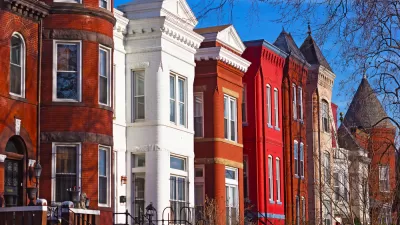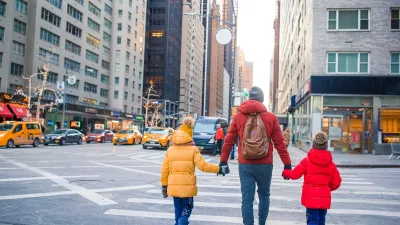Mukta Naik, a consulting planner with Indian housing firm micro Home Solutions, discovers that grand plans for a 'slum-free India' missed the mark on one key point: the lives of slum dwellers.
The government of India has launched an ambitious housing policy plan, dubbed "Rajiv Awas Yojana" (after former Prime Minister Rajiv Gandhi), centered around a vision to eradicate the nation's slums. With roughly 110 million people living in makeshift homes "with variable access to basic services like water, sanitation and sewage," the government has set before itself a herculean task that, according to Naik, is completely out of touch with the lives it was meant to improve.
Two years ago, charged with the task of implementing RAY locally, social housing initiative micro Home Solutions (mHS) worked closely with a community in Sundernagari, East Delhi, alongside a community-based NGO to design a new, equitable, accessible housing development. But over the course of the project, Naik came to a number of challenging realizations.
"We learnt early on that the community detests the concept of high-rise living, has no faith in elevator technology and since they work from home, their livelihoods are directly impacted by apartment living... Sundernagari residents held a plot of land, however small, as their ideal form of housing. Our carefully created multistorey apartment design, which tried to accommodate their every expressed need, meant nothing at all to the community."
The firm found that the constraints set forth in RAY were often incompatible with the lifestyles of slum dwellers. For example, the government plan specified 25m² units for each family, the adequacy of which both mHS and residents questioned for multi-generational living arrangements – the status quo in India, especially in poor families. While mHS was able to devise a number of features to meet community needs, the plan remains on paper indefinitely.
"For professionals to be sensitive to slum dwellers' needs," he concludes, "we need to spend time in their homes, participate in their community activities, listen to their grouses and appreciate their abilities."
FULL STORY: How do we reconcile the planner's perceptions with the slum dwellers' reality? India's Rajiv Awas Yojana

Alabama: Trump Terminates Settlements for Black Communities Harmed By Raw Sewage
Trump deemed the landmark civil rights agreement “illegal DEI and environmental justice policy.”

Planetizen Federal Action Tracker
A weekly monitor of how Trump’s orders and actions are impacting planners and planning in America.

The 120 Year Old Tiny Home Villages That Sheltered San Francisco’s Earthquake Refugees
More than a century ago, San Francisco mobilized to house thousands of residents displaced by the 1906 earthquake. Could their strategy offer a model for the present?

Ken Jennings Launches Transit Web Series
The Jeopardy champ wants you to ride public transit.

BLM To Rescind Public Lands Rule
The change will downgrade conservation, once again putting federal land at risk for mining and other extractive uses.

Indy Neighborhood Group Builds Temporary Multi-Use Path
Community members, aided in part by funding from the city, repurposed a vehicle lane to create a protected bike and pedestrian path for the summer season.
Urban Design for Planners 1: Software Tools
This six-course series explores essential urban design concepts using open source software and equips planners with the tools they need to participate fully in the urban design process.
Planning for Universal Design
Learn the tools for implementing Universal Design in planning regulations.
Clanton & Associates, Inc.
Jessamine County Fiscal Court
Institute for Housing and Urban Development Studies (IHS)
City of Grandview
Harvard GSD Executive Education
Toledo-Lucas County Plan Commissions
Salt Lake City
NYU Wagner Graduate School of Public Service




























